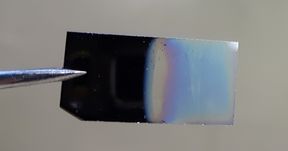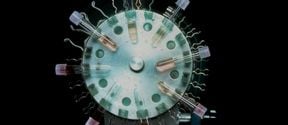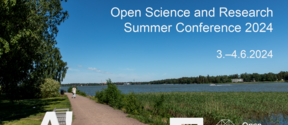New method enables the recovery of trace platinum concentrations

The method developed at Aalto University enables the recovery of trace platinum from industrial hydrometallurgy solutions. In the photo platinum has replaced the less noble metal on the surface of pyrolyzed carbon. Photo by Petteri Halli
The requirement for platinum is growing particularly because of its catalytic properties and corrosion resistance. The growing numbers of electric cars will further increase the need for platinum and other critical metals.
Platinum and other precious metals can be found in copper-, nickel- and zinc-based minerals, and consequently also in solutions resulting from the base metal industry. Typically, the concentrations of solutions resulting from base metal processing are so small that their utilisation is very difficult. In accordance with the principles of the circular economy and because of the growing demand for precious metals, their high price and the depletion of supplies, it is, however, very important to recover even trace quantities of these metals.
Researchers at Aalto University have, under the leadership of Professor Mari Lundström and University Lecturer Kirsi Yliniemi, developed a selective method for platinum recovery from industrial hydrometallurgy solutions.
"We used the so-called electrodeposition-redox replacement, EDRR, method for the recovery of precious metals from industrial process solutions", Kirsi Yliniemi says.
"The solutions contained large amounts of nickel and other base metals, and very small amounts (ppb, meaning parts per billion) of platinum, palladium and silver. Because of this ratio, it is very difficult to recover precious metals from such solutions, and without the currently developed method, they could not be fully exploited."
In addition, the process used a completely new type of electrode material, pyrolyzed carbon, PyC, developed by Professor Sami Franssila’s research group at Aalto University. Its porous surface pattern provides a surface area several hundred times larger than conventional electrodes. This carbon structure considerably improves the efficiency of the method.
An environmentally friendly, energy efficient and diverse method
The EDRR method is based on spontaneous oxidation-reduction reactions of metals, in which the more noble metal, such as platinum, oxidises the less noble metal, such as nickel or copper, already concentrated on the surface of the electrode; in the end, platinum replaces the nickel or copper on the surface, which in turn dissolves back to the solution.
Because these industrial process solutions contain only small amounts of precious metals, very little energy is required in the process. In the EDRR method, energy is supplied in short pulses rather than a continuous stream, and the replacement reaction takes place in between these pulses, for instance, between platinum and nickel. The replacement reaction of the EDDR method does not require an external energy supply, but it takes place spontaneously, specifically as a result of the metals’ purity. This method is also easy to customise and it enables the creation of a very clean platinum coating starting from the atomic level.
Mari LundströmThe EDDR method opens up new opportunities for the circular economy of critical metals, and is a major step forward for platinum recovery.
"With the EDRR method, platinum can be obtained selectively from industrial multi-metal solutions containing such small quantities of platinum, they have not so far been considered as potential platinum sources. The method is also environmentally friendly: no additional chemicals are used, which lowers the amount of chemicals harmful to the environment, and reduces the energy demand. EDRR method’s advantage is also its diversity; instead of simply recovering platinum from a solution, the method can also be used to produce workable catalytic surfaces directly, without any additional process steps", Mari Lundström says.
The research has been published in ACS Sustainable Chemistry & Engineering, September 2018:
Platinum Recovery from Industrial Process Solutions by Electrodeposition–Redox Replacement
Petteri Halli, Joonas J. Heikkinen, Heini Elomaa, Benjamin P. Wilson, Ville Jokinen, Kirsi Yliniemi, Sami Franssila, Mari Lundström
https://doi.org/10.1021/acssuschemeng.8b03224
More information:
Mari Lundström, Professor
Aalto University
[email protected]
+358 40 487 3434
Kirsi Yliniemi, University Lecturer
Aalto University
[email protected]
+358 50 592 3690
Sami Franssila, Professor
[email protected]
+358 50 536 1699
Read also: Metals needed for climate solutions – will what we have be enough?
- Published:
- Updated:
Read more news

Broadband miniaturized spectrometer research receives QTF annual discovery award 2024
The clarity and compelling presentation of the research were one of the reasons why Doctoral Researcher Md Uddin earned the prize for the research paper, which was published in Nature Communications.
Robotics needs safe behavior patterns
Robotics and autonomous systems are developing rapidly. Algorithms that withstand disturbances and uncertainties in the system model and environment are critical for development.
A new way to do controlled experiments in medicine: simulate the control
Generative AI could augment randomized controlled trials.